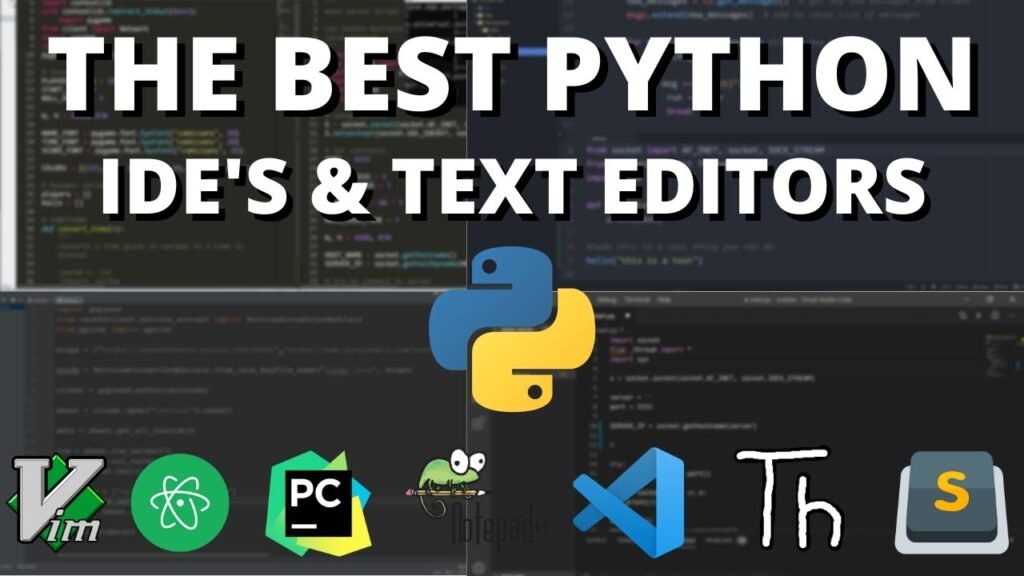Python is a versatile and powerful programming language, widely used in web development, data science, artificial intelligence, and more. To harness the full potential of Python, selecting the right Integrated Development Environment (IDE) is crucial. An IDE can significantly boost productivity by providing essential tools and features. Here’s a detailed look at some of the best IDEs for Python programming.
1. PyCharm
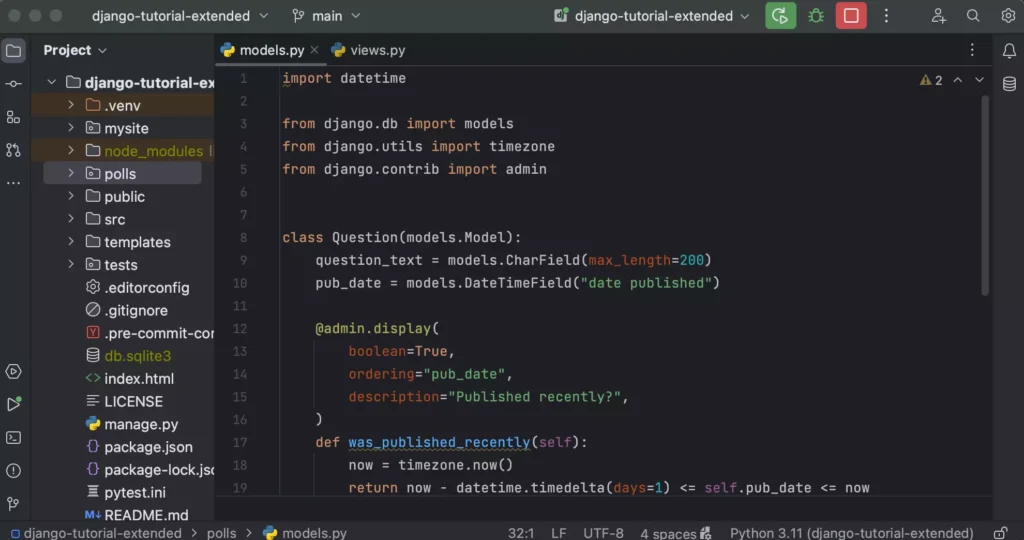
Developed by JetBrains, PyCharm is one of the most popular IDEs for Python. It comes in two editions: the Community Edition (free) and the Professional Edition (paid). PyCharm is known for its powerful features tailored for professional developers. It supports full-stack web development, data science, and machine learning workflows. PyCharm is praised for its robust code analysis and refactoring tools.
Key Features:
- Intelligent Code Editor: Offers advanced code completion, code navigation, error checking, and syntax highlighting to streamline coding.
- Debugging and Testing: Built-in debugger with breakpoints and watches, plus support for testing frameworks like pytest, unittest, and Django tests.
- Version Control Integration: Seamless integration with Git, Mercurial, SVN, and other version control systems, including an intuitive interface for managing branches and changes.
- Web Development: Full support for web frameworks such as Django, Flask, Pyramid, and web2py, including template debugging and deployment tools (Professional Edition).
- Scientific Tools: Built-in support for scientific libraries like NumPy, SciPy, and Matplotlib, along with tools for data visualization and analysis (Professional Edition).
- Database Tools: Integrated database tools for working with SQL, PostgreSQL, MySQL, Oracle, and more, allowing for easy query execution and schema navigation.
Pros:
- Highly customizable interface.
- Strong community support.
- Extensive plugin ecosystem.
- Comprehensive support for web and data science frameworks.
Cons:
- Professional Edition can be expensive.
- Can be resource-intensive.
- Steeper learning curve for beginners.
2. Visual Studio Code (VS Code)
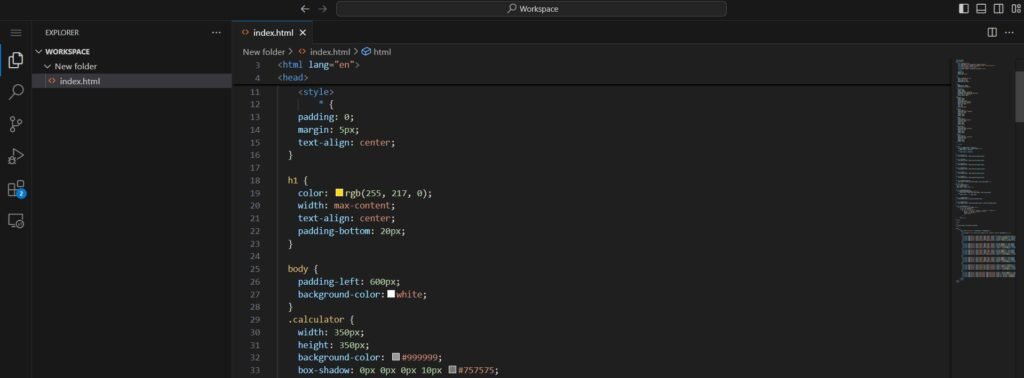
VS Code, developed by Microsoft, is a lightweight but powerful source code editor that has gained immense popularity among developers. It offers a broad range of extensions and is highly customizable, making it suitable for various programming tasks beyond Python. VS Code has a vast marketplace of extensions that can transform it into a fully-fledged Python IDE.
Key Features:
- Extensibility: Thousands of extensions available, including Python-specific extensions like Python by Microsoft, Pylance, Jupyter, and more.
- Integrated Terminal: Built-in terminal that supports shell commands and script execution, with customizable shell integration.
- Debugger: Powerful debugging capabilities, including breakpoints, call stack inspection, variable watches, and interactive debugging console.
- Version Control: Built-in support for Git and other version control systems, with a visual interface for managing repositories, branches, commits, and merges.
- Jupyter Notebooks: Native support for Jupyter Notebooks, allowing you to run and edit notebook files directly within the editor, with full support for interactive data visualization.
- Live Share: Real-time collaborative coding with Live Share, allowing multiple developers to edit and debug code together in real-time.
Pros:
- Free and open-source.
- Highly customizable.
- Strong performance with low resource usage.
- Wide range of extensions for various functionalities.
Cons:
- Requires extensions for full Python support.
- Initial setup can be complex for beginners.
- Limited out-of-the-box functionality compared to dedicated Python IDEs.
3. Jupyter Notebook
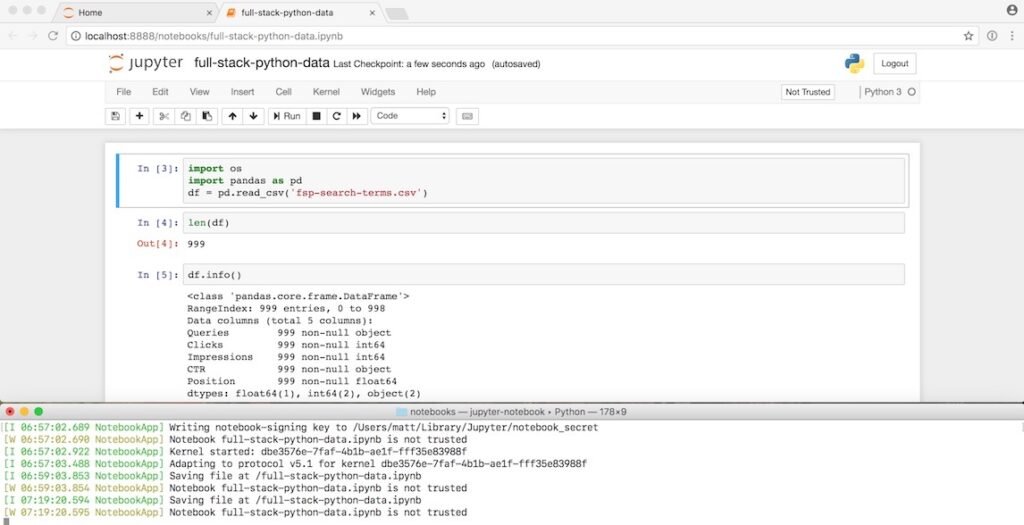
Jupyter Notebook is an open-source web application that allows you to create and share documents containing live code, equations, visualizations, and narrative text. It is extensively used in data science, machine learning, and educational contexts due to its interactive and visual nature. Jupyter Notebooks are ideal for exploratory data analysis and prototyping.
Key Features:
- Interactive Coding: Real-time code execution and output visualization, with the ability to interleave code, output, and rich text in a single document.
- Markdown Support: Combine code with rich text elements using Markdown, allowing for the creation of well-documented and visually appealing notebooks.
- Extensibility: Support for various programming languages via kernels, including Python, R, Julia, and more.
- Data Visualization: Seamless integration with data visualization libraries like Matplotlib, Seaborn, Plotly, and Bokeh, enabling interactive and static visualizations.
- Notebook Sharing: Easy sharing of notebooks via platforms like GitHub and NBViewer, and export options to HTML, PDF, and other formats.
- Collaboration: Support for collaborative features through JupyterHub and other platforms, allowing multiple users to work on notebooks simultaneously.
Pros:
- Ideal for data analysis and visualization.
- Great for educational purposes.
- Free and open-source.
- Supports collaboration and sharing.
Cons:
- Not suitable for large-scale software development.
- Limited debugging capabilities.
- Performance issues with very large datasets.
4. Spyder
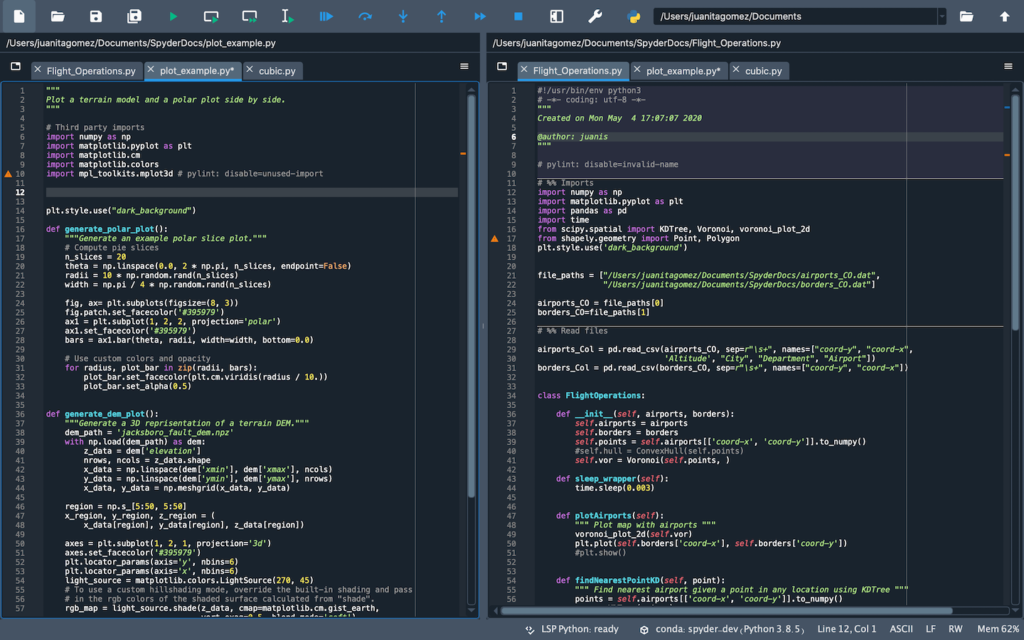
Spyder is an open-source IDE specifically designed for scientific programming with Python. It’s often used by data scientists and engineers. Spyder integrates well with popular scientific libraries and offers a MATLAB-like interface, making it familiar for users transitioning from other scientific computing environments. It is included with Anaconda, a popular distribution for data science.
Key Features:
- Scientific Libraries: Integrated with scientific libraries like NumPy, SciPy, Pandas, and Matplotlib, providing a powerful environment for scientific computing and data analysis.
- Variable Explorer: Intuitive variable explorer for examining and editing dataframes, arrays, and other data types in a tabular format.
- Integrated Console: IPython console for interactive computing, with support for running and debugging code in a seamless environment.
- Debugging: Built-in debugger for troubleshooting code, with features like breakpoints, step-through execution, and variable inspection.
- Plotting: Inline plotting with Matplotlib, allowing for interactive exploration of data visualizations directly within the IDE.
- Editor Features: Advanced editor features including code completion, syntax highlighting, and real-time code analysis.
Pros:
- Tailored for scientific computing.
- Lightweight and user-friendly.
- Free and open-source.
- Strong integration with data science libraries.
Cons:
- Limited features compared to other full-fledged IDEs.
- Can be slow with large datasets.
- Basic interface compared to more feature-rich IDEs.
5. Atom
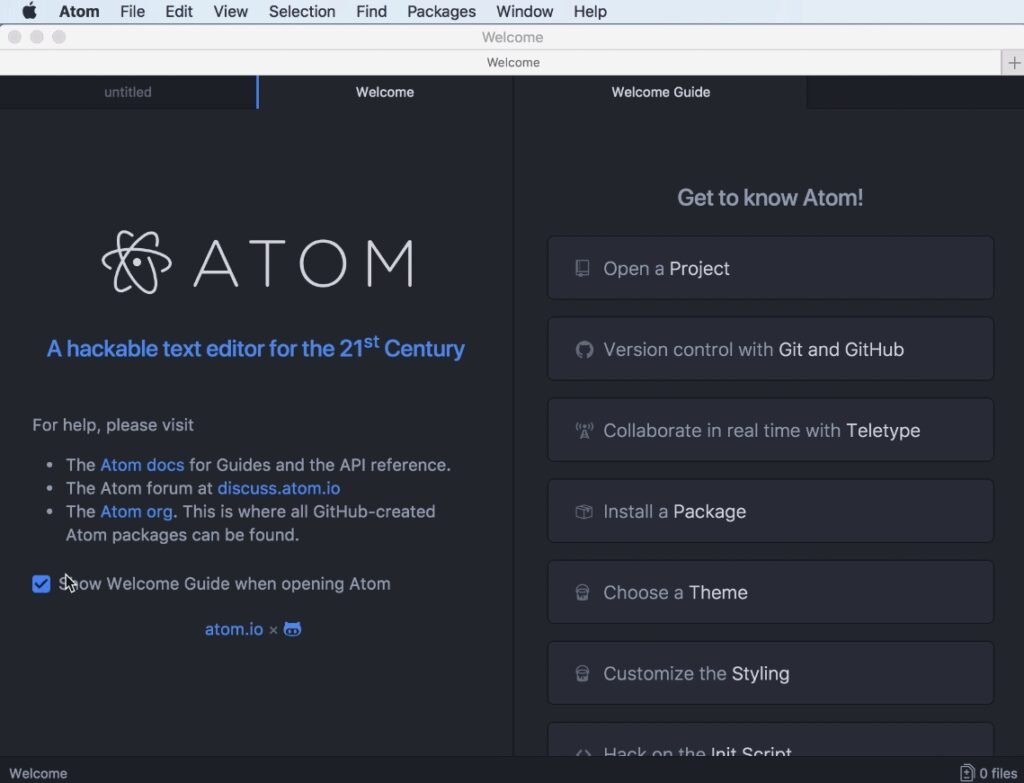
Atom is a hackable text editor from GitHub, which can be transformed into a powerful IDE with the right packages. It is designed to be deeply customizable, allowing users to tweak the interface and functionality to their liking. Atom is suitable for a wide range of programming languages, not just Python. It has a vibrant community that contributes to a rich ecosystem of packages and themes.
Key Features:
- Extensibility: Numerous packages available for Python development, such as the Python IDE, linter-python, and autocomplete-python packages.
- Built-in Git Integration: Seamless version control with Git, including a visual interface for managing repositories, branches, commits, and merges.
- Customization: Highly customizable interface with support for themes, plugins, and keybindings, allowing users to create a personalized development environment.
- Collaborative Editing: Teletype package for real-time collaboration, enabling multiple developers to edit and debug code together.
- Cross-platform Support: Runs on Windows, macOS, and Linux, providing a consistent experience across different operating systems.
- Editor Features: Advanced editor features including multiple cursors, split panes, fuzzy finder for files, and command palette for quick access to functions.
Pros:
- Free and open-source.
- Cross-platform support.
- Highly customizable with community-driven packages.
- Clean and modern interface.
Cons:
- Can be slower compared to other editors.
- Requires configuration to reach full potential.
- Some advanced features require additional packages.
6. Thonny
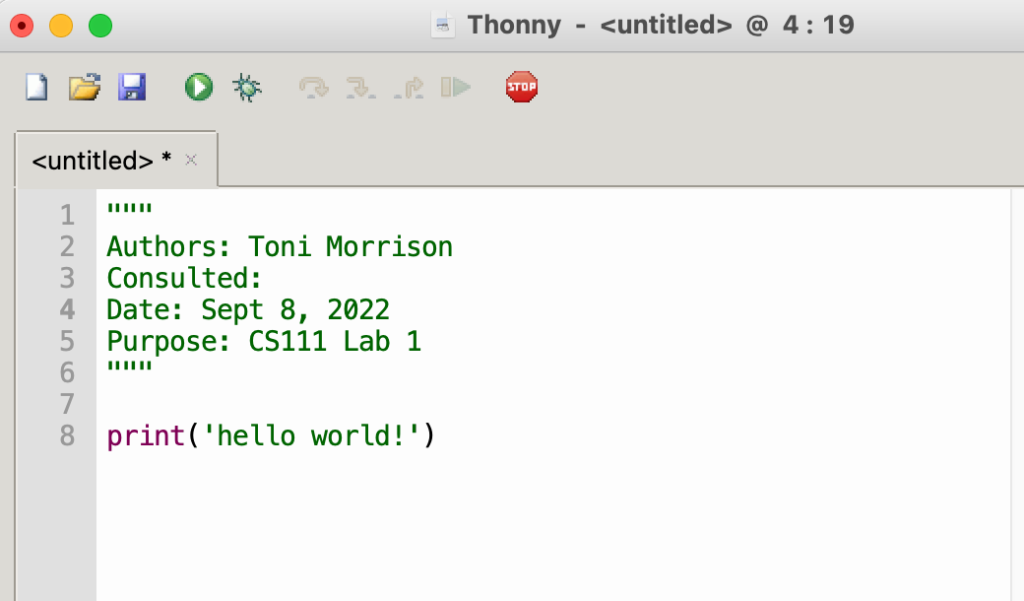
Thonny is a beginner-friendly Python IDE designed with simplicity and ease of use in mind. It is particularly suitable for learning and teaching Python programming. Thonny provides a simple interface that helps new programmers focus on learning the language without being overwhelmed by complex features. Despite its simplicity, Thonny includes features that support advanced programming as users grow more experienced.
Key Features:
- Beginner-Friendly Interface: Simple and intuitive design that reduces the learning curve for new programmers, with a clear layout and minimal distractions.
- Step-by-Step Debugging: Easy-to-use debugger for step-by-step code execution, allowing beginners to understand the flow of their programs, with visualization of call stacks and variable states.
- Variable Inspector: Real-time inspection of variables, making it easy to see how data changes as code runs, with support for basic data types and collections.
- Package Management: Simple tools for managing Python packages, enabling users to easily install and use third-party libraries through a graphical interface.
- Integrated Python Shell: Allows for immediate execution of Python code snippets, fostering experimentation and learning, with support for running scripts and interactive sessions.
- Error Highlighting: Clearly highlights errors and provides meaningful messages to help users correct their code, with syntax highlighting and real-time feedback.
- Educational Tools: Features like code completion, syntax suggestions, and inline documentation are tailored to help beginners learn and understand Python programming concepts.
Pros:
- Ideal for beginners and educational purposes.
- Free and open-source.
- Lightweight and easy to install.
- Includes all necessary features for basic programming tasks.
- Clean interface that avoids overwhelming new users with too many options.
Cons:
- Limited features for advanced users.
- Not suitable for large projects or professional development.
- Basic interface compared to more advanced IDEs.
Conclusion
Choosing the best IDEs for Python programming depends on your specific needs and preferences. PyCharm is excellent for professional developers who need advanced features, while VS Code offers a balance of performance and extensibility. Jupyter Notebook is unparalleled for data science and educational purposes, and Spyder caters specifically to scientific computing. Atom provides flexibility and customization for those who enjoy tweaking their development environment. Thonny is perfect for beginners. Regardless of your choice, each of these IDEs can significantly enhance your Python programming experience.
Subscribe Our 100% Free Newsletter
